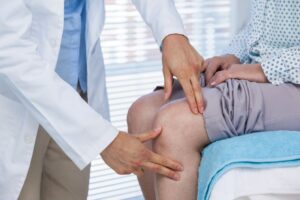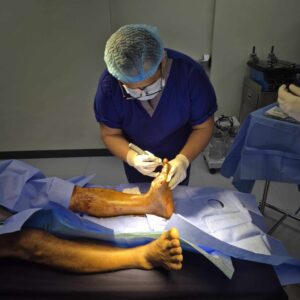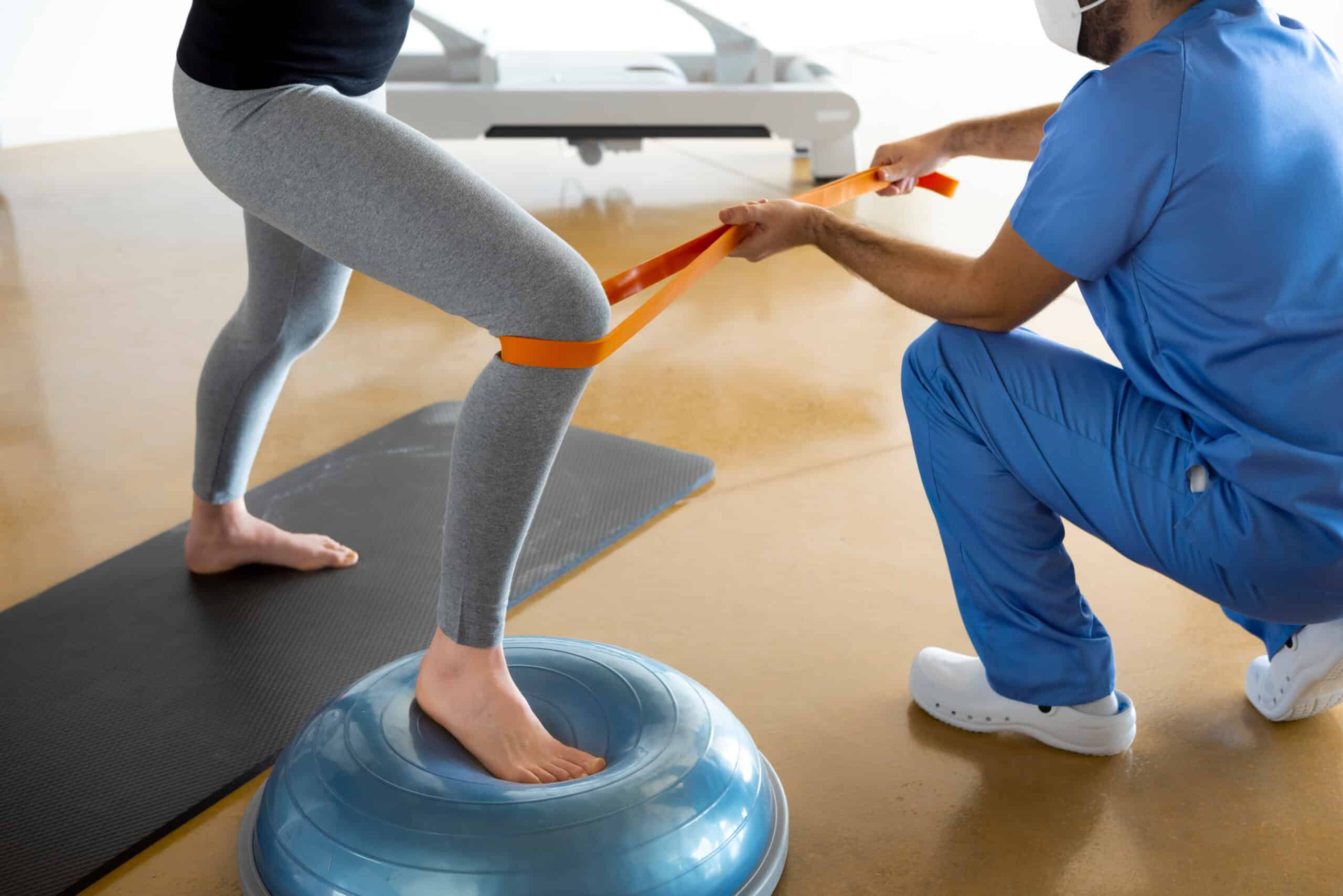Knee replacement surgery can transform mobility, relieve chronic pain, and restore the freedom to enjoy everyday activities. While the procedure offers life-changing results, recovery requires careful attention to specific precautions. Knowing the key restrictions after knee replacement ensures proper healing, minimizes complications, and promotes long-term joint health. Following these guidelines helps patients regain strength and confidence while protecting the newly replaced knee.
Understanding Knee Replacement Surgery
Knee replacement, whether total or partial, involves replacing damaged joint surfaces with artificial components to restore function and relieve pain caused by arthritis, injury, or degeneration. At Hips and Knees Joint Restoration and Replacement Center, advanced techniques such as the Direct Anterior Approach (DAA) are used to minimize surgical trauma. This minimally invasive method allows faster recovery, less post-operative discomfort, and quicker restoration of mobility compared with traditional approaches.
Patients considering surgery abroad benefit from expert surgical teams, personalized rehabilitation plans, and comprehensive aftercare that ensure a smooth recovery journey. Understanding the procedure helps patients appreciate the importance of following restrictions after knee replacement, which are designed to protect the joint during the delicate healing phase.
Why Restrictions Are Crucial After Knee Replacement
Ignoring restrictions after knee replacement can compromise surgical outcomes. The joint requires time to heal and adapt to its new components. Premature or unsafe activity can lead to complications such as joint dislocation, implant loosening, infection, or delayed recovery.
Following post-operative restrictions ensures that the artificial joint functions optimally and reduces pain and swelling. Patients who adhere to these guidelines are more likely to regain strength, mobility, and confidence while avoiding setbacks. Proper adherence also helps maintain the long-term durability of the knee replacement, allowing patients to enjoy an active lifestyle for many years.
Key Restrictions After Knee Replacement
Avoid High-Impact Activities
High-impact exercises such as running, jumping, or participating in contact sports are not safe during early recovery and can strain the joint. Patients should avoid these activities until cleared by their orthopedic surgeon. Low-impact exercises, like walking, swimming, or using a stationary bike, are safer alternatives that promote circulation, strengthen muscles, and support rehabilitation without jeopardizing the implant.
Avoid Kneeling or Deep Squats
Kneeling or performing deep squats can put excessive pressure on the knee joint and surrounding tissues, potentially causing discomfort or injury. Patients are advised to use supportive devices or modified techniques for daily tasks that require bending. Occupational therapists at Hips and Knees Center can recommend safe strategies to maintain independence while respecting restrictions after knee replacement.
Limit Twisting or Pivoting Motions
Twisting or pivoting on the operated knee can destabilize the joint or stress ligaments and soft tissues. These movements should be avoided, especially in the first several months after surgery. Patients are encouraged to step carefully, turn with the entire body rather than twisting the knee, and use assistive devices when necessary. Safe movement patterns help protect the joint and accelerate recovery.
Restrictions on Lifting Heavy Objects
Lifting heavy items can place strain on the knee and surrounding muscles. Patients should follow specific weight limits recommended by their surgical team. Avoiding heavy lifting during the recovery period reduces the risk of pain, swelling, and implant strain. Proper lifting techniques and using assistive devices for household tasks help patients comply with restrictions after knee replacement without compromising daily functionality.
Prolonged Sitting or Crossing Legs
Sitting for extended periods or crossing the legs can interfere with circulation and affect knee alignment. Maintaining proper posture and using supportive seating ensures comfort and minimizes swelling. Patients should take breaks to walk gently, elevate the leg when appropriate, and follow ergonomic guidelines to protect the knee joint.
Driving Restrictions
Driving requires full control, reaction speed, and pain-free movement. Patients should refrain from driving until cleared by their surgeon, typically several weeks post-surgery. Driving too soon can compromise safety and violate restrictions after knee replacement. Alternative transportation or support from family and friends is recommended during early recovery.
Activities to Introduce Gradually
While certain movements and tasks are restricted initially, gentle exercises can be introduced gradually under medical guidance. Walking short distances, swimming, and supervised physiotherapy exercises help rebuild strength, flexibility, and confidence. Hips and Knees Joint Restoration and Replacement Center provides personalized rehabilitation plans to ensure safe progression. Following these plans allows patients to gradually expand mobility while respecting restrictions after knee replacement and avoiding setbacks.
Tips for a Smooth Recovery
Creating a safe environment at home supports adherence to restrictions after knee replacement. Installing handrails, using non-slip mats, and arranging frequently used items within easy reach reduces risk of falls or strain. Pain management, including prescribed medications and ice therapy, can improve comfort and encourage safe movement. Monitoring for warning signs, such as unusual swelling, redness, or pain, ensures early intervention if complications arise.
Telemedicine follow-ups and remote monitoring allow patients recovering abroad to receive continuous guidance and maintain adherence to restrictions after knee replacement. Personalized support, education, and prompt communication with the surgical team are critical for a successful recovery.
Common Mistakes to Avoid After Knee Replacement
Many patients unintentionally delay recovery by not following restrictions after knee replacement. Common mistakes include overexertion, attempting high-impact activities too early, ignoring pain, and skipping rehabilitation exercises. Each of these actions increases the risk of complications, prolongs recovery, and reduces long-term joint performance.
Another frequent error is neglecting home modifications or mobility aids. Using walkers, canes, or rails as recommended supports safe movement, reduces joint stress, and prevents falls. Patients who carefully follow guidance and respect restrictions after knee replacement tend to experience faster recovery, reduced discomfort, and better overall outcomes.
Takeaway
Understanding and adhering to restrictions after knee replacement is essential for a safe, effective, and lasting recovery. Patients who follow guidance from Hips and Knees Joint Restoration and Replacement Center benefit from improved mobility, reduced pain, and enhanced quality of life. Careful attention to activity limitations, rehabilitation plans, and post-operative tips ensures the best outcomes and allows patients to enjoy the full benefits of their new knee joint.
Respecting restrictions after knee replacement is not merely about avoiding injury—it is about creating a foundation for long-term joint health, strength, and independence.
Frequently Asked Questions
How long should I follow restrictions after knee replacement?
Restrictions are typically most critical during the first 6–12 weeks, but some precautions may extend for several months. Your surgeon will provide personalized guidance based on your recovery progress.
Can I resume sports or running after knee replacement?
High-impact activities should be avoided permanently in most cases. Low-impact exercises such as swimming, walking, and cycling are safer and encouraged.
What signs indicate I’m overexerting my knee?
Warning signs include swelling, increased pain, redness, or instability. Experiencing these symptoms means it’s time to pause activity and consult your healthcare provider.
Are there activities I can safely do right after surgery?
Gentle walking, ankle pumps, and specific physiotherapy exercises recommended by your surgical team are safe early in recovery. All activities should follow the guidelines for restrictions after knee replacement.
Can I travel internationally during recovery?
Yes, with proper planning and adherence to post-surgery restrictions. Hips and Knees Center offers telemedicine support and recovery guidance for international patients.











